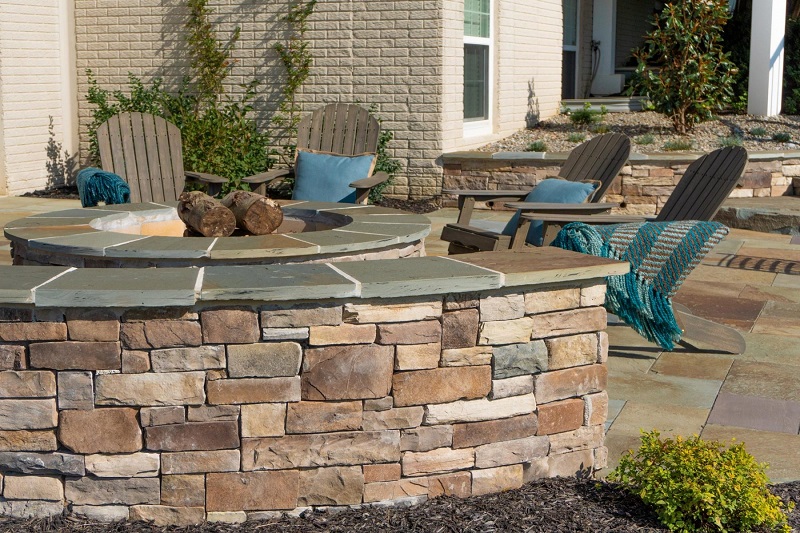A retaining wall is a structure that is used to hold back or retain soil. These walls can be constructed using a variety of materials, including concrete blocks, poured concrete, treated wood, rocks, and boulders. Each of these materials has its own benefits and drawbacks, with some being easier to work with and some having a longer lifespan. Retaining walls are versatile structures that can serve a variety of purposes and can be quite complex in their design and construction.
Types of Retaining Wall
The environment in which we live has changed over time thanks to a variety of retaining wall materials. Retaining walls come in many different varieties; some of the more well-known ones are covered below.
Reinforced Retaining Wall
Reinforced concrete and reinforced masonry walls on spread foundations are gravity structures, and the weight of the wall and the reinforcement bars in the wall provide stability against toppling.
Gravity Wall
Gravity walls rely on their mass (stone, concrete, or another heavy material) to withstand pressure from the back. They may also have a “batter” setback to increase stability by leaning back toward the retained soil. Concrete segment units (masonry units) or mortarless stone blocks are frequently used to construct short landscaping walls. Dry-stacked gravity walls can be constructed without a rigid footing because they are somewhat flexible.
Today, taller retaining walls are increasingly constructed as composite gravity walls, such as crib walls (cells built up in the style of a log cabin from precast concrete or timber and filled with granular material), gabions (stacked steel wire baskets filled with rocks), and geosynthetics like Geocell cellular confinement earth retention or with precast facing.
Berliner Wall
Roman military engineers regarded this type of wall as legendary and employed it for extensive excavations. It is an easy, quick, and relatively inexpensive system. It is mainly limited to temporary construction and cannot be used in high formation conditions without expensive and extensive dewatering. Unlike some types of retentive retaining walls, it is not as rigid.
Soil nailed wall
Soil-nailed walls are built by introducing passive bars, or bars that work in tension, into the area being excavated to reinforce the soil as the wall is constructed. These bars are typically placed parallel to one another and slightly slanted downward, and they have some bend and shear strength. The nails become tense due to skin friction with the soil as they are inserted into the ground. This helps to create a stable structure that can effectively hold back soil.
Anchored wall
Any of the building techniques can be used to build anchored retaining walls, but it also includes extra support provided by cables or other stays that are fastened to the rock or soil behind it. At the end of the cable, anchors that are typically drilled into the material with boring are then expanded, either mechanically or frequently by injecting pressurized concrete into the soil, which expands to form a bulb in the soil. Although technically challenging, this method is extremely helpful in situations where high loads are anticipated or where the wall itself must be thin and would otherwise be too weak.

Sheet Piled wall
Piling is an excavation support method for holding back soil by using sheet sections with interlocking edges. A pile that has been driven into a slope or excavation serves as a temporary certificate wall to support the soft soils collapse from higher ground to lower ground. It helps to lightweight and offers high resistance to driving stresses. With minimal protection, sheet piles can be reused repeatedly and have a long useful life above or below water. It is easy to change the pile length by attaching or bolting, and joints are less likely to deform while driving.
Bored pile wall
By connecting a series of bored piles and then excavating the extra soil, bored pile retaining walls are constructed. Depending on the project, the bored pile retaining wall may also involve:
- Several earth anchors,
- Reinforcing beams,
- Soil improvement techniques, and
- A shotcrete reinforcement layer
This building method is typically used when sheet piling is a viable construction option but the vibration or noise levels produced by a pile driver are intolerable.
Conclusion
The primary functions of retaining walls are – to reduce soil erosion, make beds out of steep terrain, and provide aesthetically pleasing or practical landscaping features. They might be standalone buildings or a component of a larger construction project, like a building.



